Embarking on a green revolution in gardening, cultivating plants in recycled plastic bottles and containers emerges as an innovative practice, effectively reducing waste and championing sustainability. This method not only transforms discarded materials into functional tools but also minimizes the environmental impact of traditional gardening.
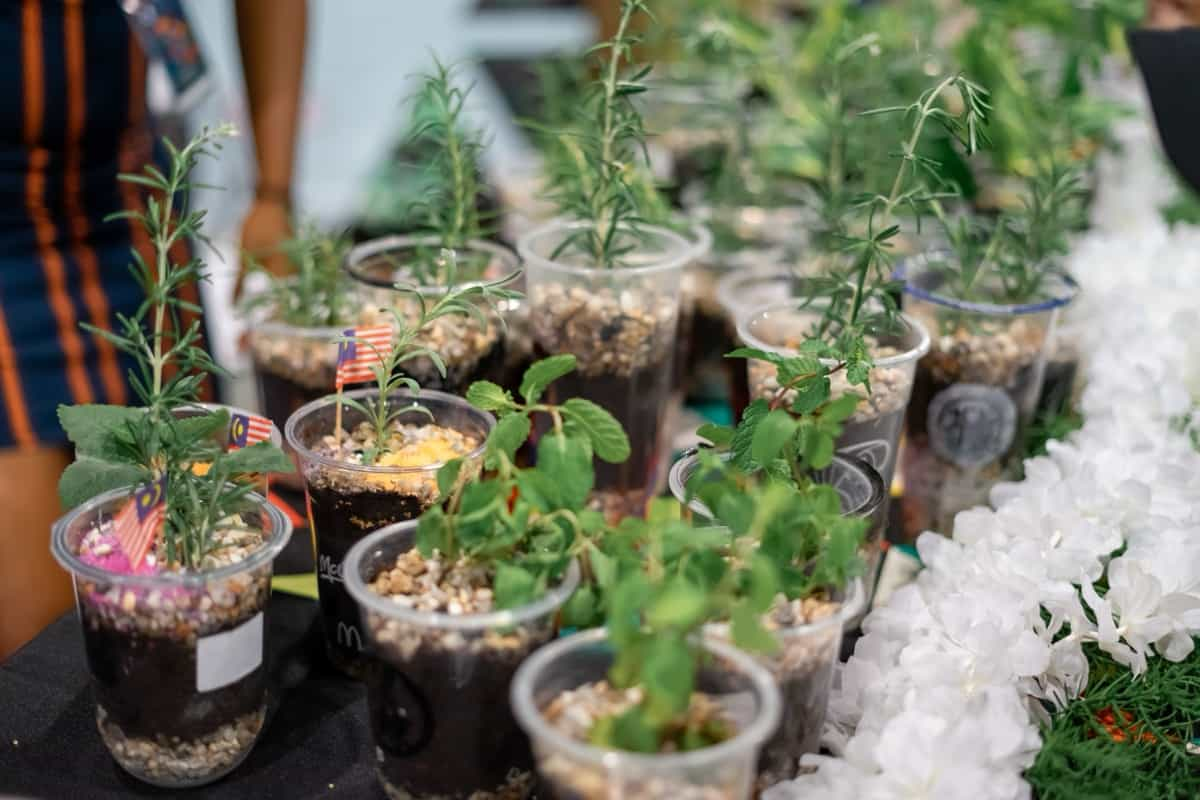
Cultivating Plants in Recycled Plastic Bottles
What are Cultivating Plants in Recycled Plastic Bottles and Containers?
Cultivating plants in recycled plastic bottles and containers is a creative and eco-friendly way to grow your herbs, flowers, or vegetables. It is also a fun and educational activity for children and adults alike. Recycling plastic bottles and containers reduces waste and saves energy while providing a suitable environment for plants to thrive. You can use any type of plastic bottle or container, such as soda bottles, milk jugs, yogurt cups, or water bottles.
You need to make a hole in them, put dirt in them, and then plant your seeds or seedlings. You can also make them look better by painting, sticking stickers on them, or using other things. You can place your recycled plastic bottle planters on windowsills, balconies, and patios or even hang them from the ceiling. They are ideal for small spaces or urban settings where you only have a little room for gardening. Cultivating plants in recycled plastic bottles and containers is a simple and rewarding way to enjoy nature and help the environment.
Benefits of Plastic Bottle Gardening
- Plastic bottle gardening is a sustainable and eco-friendly way to grow food and plants without causing harm to the environment. It is a low-cost and low-maintenance method that doesn’t require expensive pots, soil, fertilizers, or pesticides.
- Organic materials like compost, coffee grounds, eggshells, and banana peels can enrich the soil and deter pests. Rainwater or greywater can also be used to water plants.
- Plastic bottle gardening is ideal for urban dwellers with limited space or no access to a garden. Vertical gardens can be created by hanging plastic bottles on walls, fences, balconies, or windowsills, while horizontal gardens can be created by stacking plastic bottles horizontally. This method increases crop yield and diversity.
- Plastic bottle gardening also improves air quality and health by absorbing carbon dioxide, releasing oxygen, as well as filtering out harmful chemicals and toxins. It also enhances physical and mental health by reducing stress, boosting mood, enhancing creativity, and promoting exercise.
- By transforming your home or workplace into a green oasis, you can beautify your surroundings and add color to your surroundings. You can decorate your plastic bottles with paint, stickers, ribbons, or other materials and choose colorful plants to add vibrancy and beauty to your environment.
In case you missed it: Popular Dwarf Fruit Varieties Grow Easily in Containers: Full Guide for Beginners
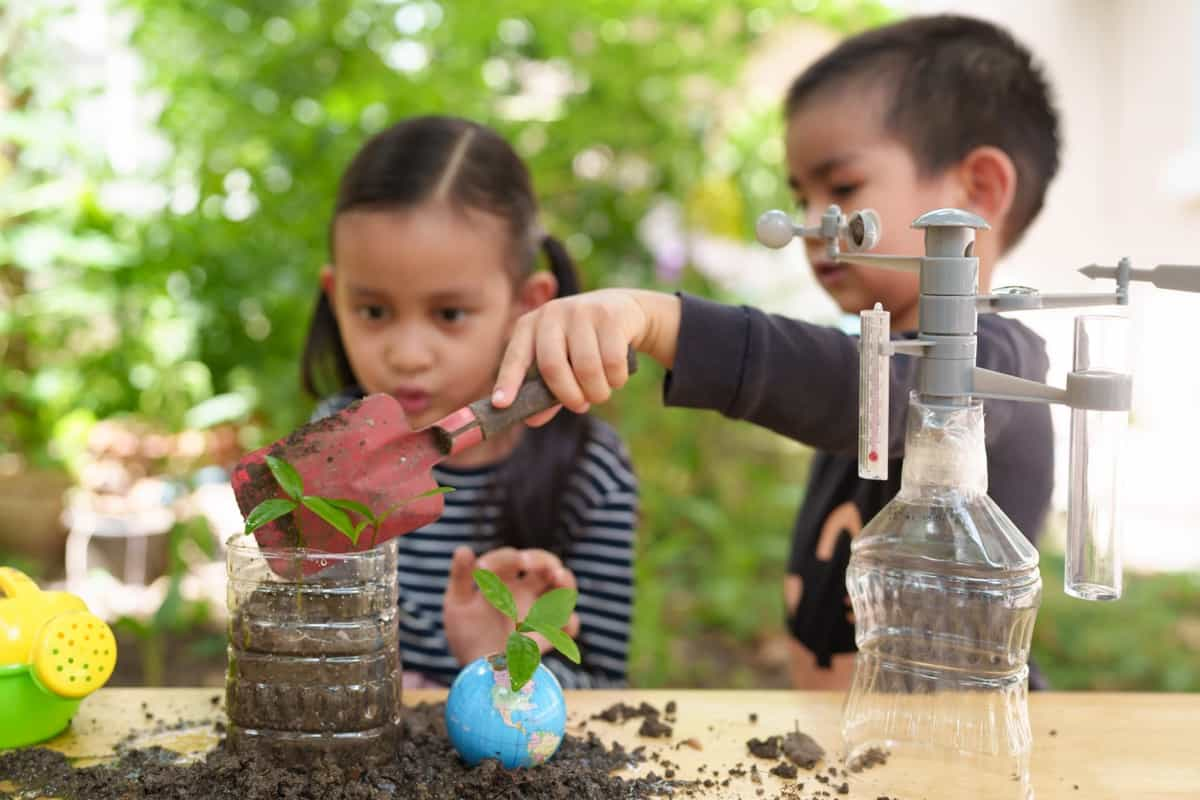
Choosing the Right Plants for Cultivation In Recycled Plastic Bottles and Containers
- Recycling plastic bottles and containers can be a cost-effective, environmentally friendly way to grow plants. To choose the right plant for container gardening, consider the size, type of plant, and location.
- Large containers can accommodate roots and provide adequate drainage, while smaller containers can accommodate plants like herbs, lettuce, spinach, radishes, strawberries, cherry tomatoes, succulents, cacti, or air plants.
- Place the container in a spot with enough sunlight and air circulation for the plant’s needs, such as hanging from a wall, fence, or balcony or placing it on a windowsill, shelf, or table.
- Regular watering and occasional fertilization with organic or liquid fertilizer are essential for maintaining the plant. Pruning or harvesting the plant as needed can also help maintain the container’s health.
Preparation and Setup of Recycled Plastic Bottles and Containers for Planting
Choose the right size and shape of the container. The container should match the size and shape of the plant you want to grow. For example, herbs and succulents can grow well in small bottles with narrow mouths, while tomatoes and peppers need bigger containers with wide mouths and drainage holes.
Clean and sterilize the container. Wash the container with soap and water, and then rinse it well. You can also soak it in a solution of bleach and water for 10 minutes to kill any germs or bacteria that may harm your plants. Cut and decorate the container. Use scissors or a knife to cut the container into the shape you want. You can also use a drill or a nail to make holes for drainage or hanging.
You can paint, glue, or wrap the container with fabric, paper, or other materials to make it more attractive and personalized. Fill the container with potting mix. Use any potting mix that is suitable for your plant, or make your own by mixing compost, perlite, vermiculite, peat moss, or other organic materials. Fill the pot with potting mix until it’s two inches below the top. Make sure it’s not wet.
Put down your seeds or young plants. You can either put the seeds right in the pot or move the seedlings from another pot. The best way to place, space, and water plants is to follow the directions on the seed packet or plant label. In a warm spot, place the pot. To grow well, most plants need at least six hours of sunshine a day. Put your pot somewhere that gets enough light. You can also use artificial lights if you don’t have a natural source of light.
In case you missed it: Gardening Tips for Beginners: At Home, in Pots/Containers, Indoors, On Terrace for Vegetables, Flowers, Fruits, and Herbs
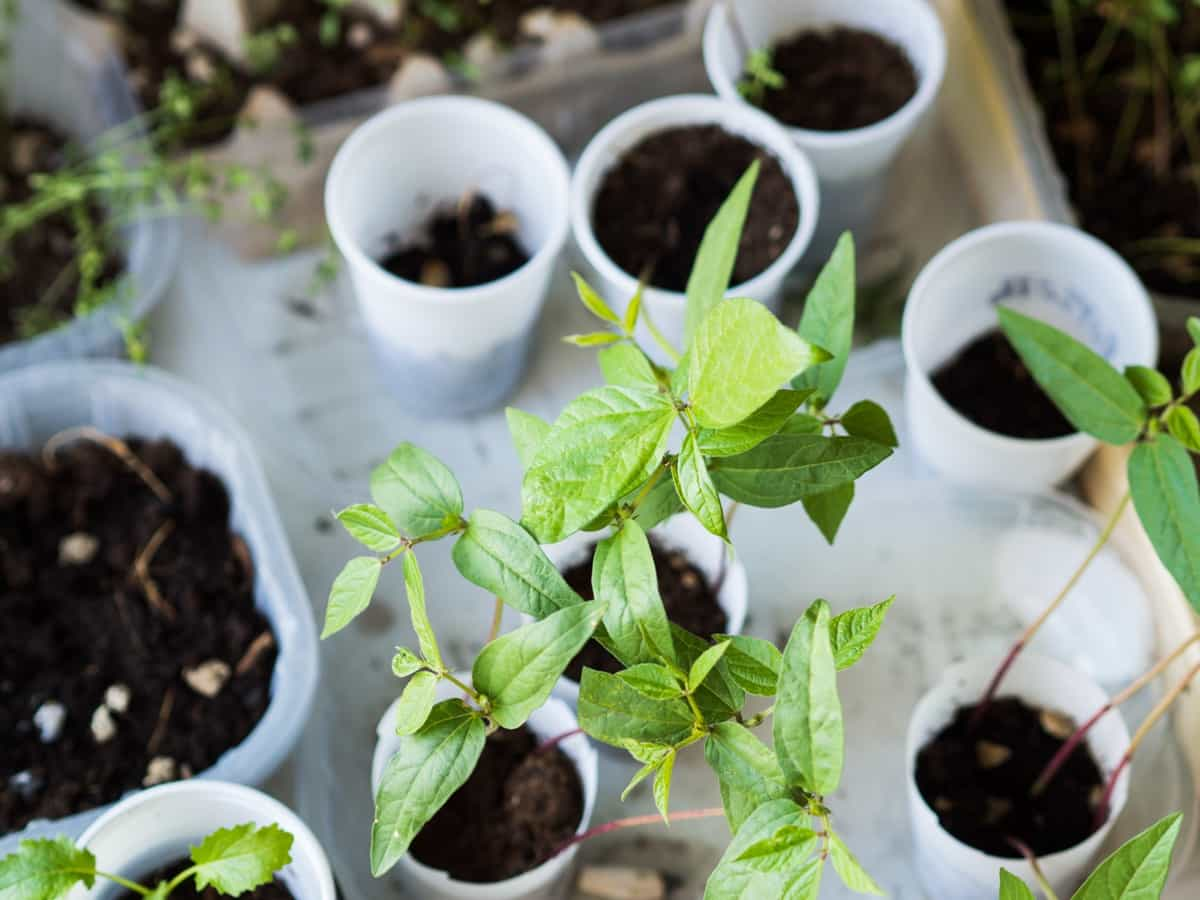
You can hang your container from a window, a balcony, a fence, or a wall, or you can place it on a shelf, a table, or a stand. Recycled containers are ideal for growing different plants, including herbs, succulents, vegetables, fruits, and flowers. Examples include basil, mint, parsley, rosemary, thyme, aloe vera, cactus, jade plant, echeveria, lettuce, spinach, kale, radish, carrot, strawberry, blueberry, cherry tomato, marigold, petunia, pansy, zinnia.
Proper Watering and Drainage Techniques for Plants in Recycled Plastic Bottles and Containers
Plants grown in recycled plastic bottles and containers require proper watering and drainage for their growth. These bottles can be used to create irrigation systems like drip irrigators, self-watering containers, or watering cans. To create a drip irrigator:
- Cut off the bottom of a plastic bottle and poke holes in the cap.
- Bury the bottle cap-side-down in the soil near the plant, fill it with water, and adjust the cap to control water flow.
- Cover the bottle with a sock or nylon to prevent soil from clogging the holes.
For a self-watering container, cut a plastic bottle horizontally about two-thirds of the way up and insert a strip of fabric or string through the lid, creating a knot inside the lid. Invert the top half of the bottle and place it inside the bottom half, acting as a water reservoir. Fill the top half with a potting mix and plant seeds or seedlings. For a watering can, poke holes in the lid and handle, allowing air to enter the bottle as water leaves. Water plants as needed, avoid overwatering or underwatering, and use a moisture meter or finger to test soil moisture.
Nutritional Needs and Fertilization For Plants Grown In Recycled Plastic Bottles And Containers
Plants grown in recycled plastic bottles and containers require proper nutrition and fertilization for healthy growth. Bioplastics, such as poly(isosorbide carbonate) (PIC), can be used to create fertilizers from recycled plastic bottles. PIC can be degraded by ammonia into urea, a nitrogen-rich fertilizer, which can be applied to the soil.
To make a bioplastic fertilizer, cut PIC into small pieces, mix them with water and ammonia, and leave them at room temperature for 24 hours. Dilute the solution with more water and use it to water plants. Organic waste can be composted into fertilizers using kitchen scraps. Cut off the top of a large plastic bottle, poke holes in the bottom and sides for ventilation, layer dry materials at the bottom, add moist materials, and sprinkle soil or compost starter on top.
Keep the bottle moist but not soggy, and turn it occasionally to aerate it. Chemical fertilizers can be made from commercial fertilizers, which contain different ratios of nitrogen, phosphorus, and potassium. Regularly feed plants according to their needs and avoid overfertilization or under fertilization to prevent nutrient deficiencies or toxicities.
Maintenance And Care Tips for Thriving Plants In Recycled Plastic Bottles And Containers
Plants grown in recycled plastic bottles and containers require proper care and maintenance to thrive. These containers can be used to create vertical gardens, hanging baskets, window boxes, or pots. To create a vertical garden, stack plastic bottles on top of each other, secure them with glue, tape, or wire, and fill each with potting mix. Plant seeds or seedlings, and attach the bottles to a wall, fence, or trellis. Water and fertilize the plants regularly, providing them with enough sunlight.
In case you missed it: 12 Key Rules for Successful Container/Pot Gardening: For Beginners
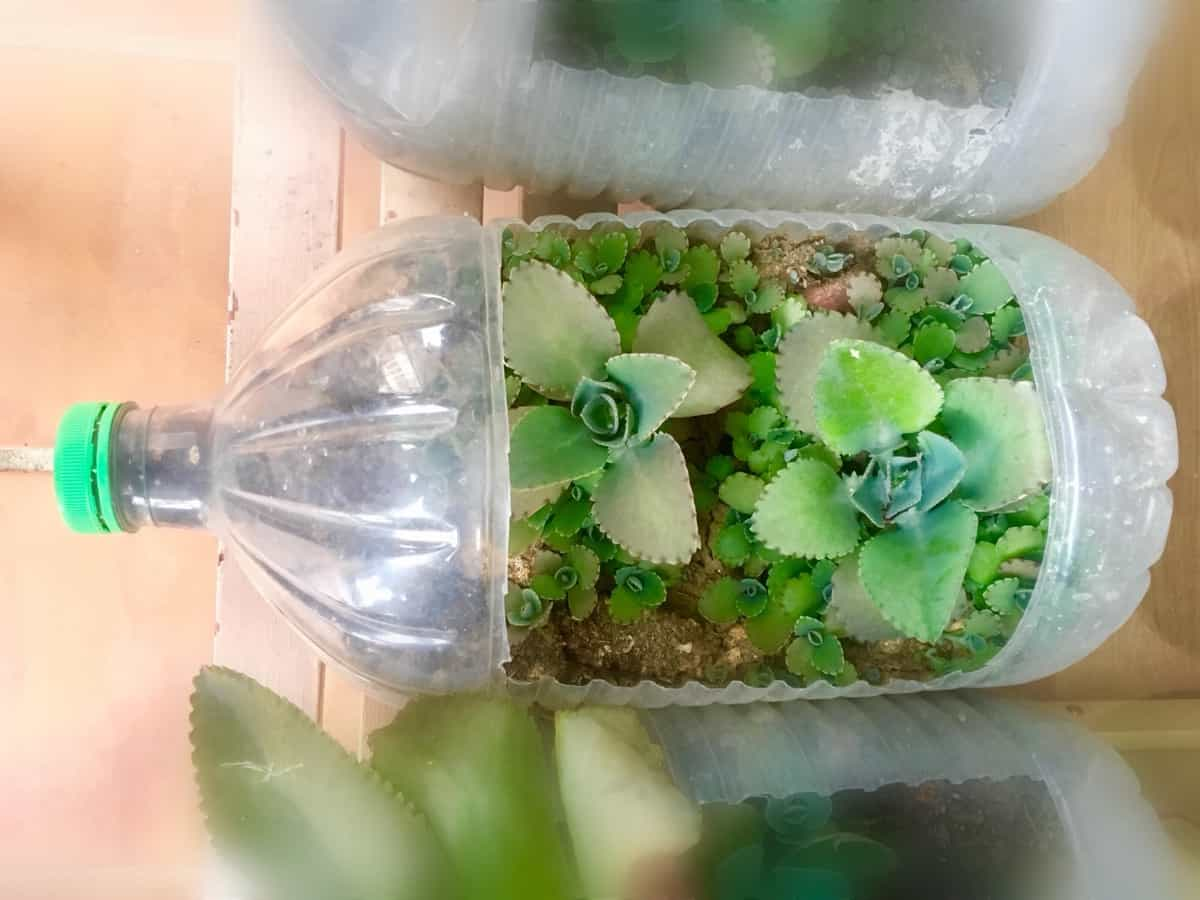
For a hanging basket, cut off the top of a large plastic bottle and poke holes in the bottom and sides for drainage. Fill the bottle with potting mix and plant seeds or seedlings. Decorate with paint, stickers, or ribbons, and hang it from a ceiling, balcony, or tree. Water and fertilize the plants regularly, and provide them with enough sunlight. For a window box, cut off the top of a long plastic bottle and poke holes in the bottom for drainage. Fill the bottle with potting mix and plant seeds or seedlings.
Decorate with paint, stickers, or ribbons, and attach hooks or brackets to the back. Water and fertilize the plants regularly, and provide them with enough sunlight. For a pot, use any plastic bottle or container with a wide opening and poke holes in the bottom for drainage. Fill the bottle or container with potting mix and plant seeds or seedlings. Decorate with paint, stickers, or ribbons, and place it on a tray, saucer, or plate to catch excess water. Harvest the plants when ready and enjoy their fruits, flowers, or foliage.
Creative Ideas for Repurposing Different Types of Plastic Bottles and Containers for Plant Cultivation
Plastic bottles and containers can be a valuable resource for plant cultivation, offering numerous benefits such as cost savings, space savings, water conservation, and environmental sustainability. By using plastic bottles and containers, you can grow plants in various ways, such as vertically, horizontally, or hanging arrangements, and create self-watering systems that reduce water loss and evaporation.
Additionally, you can collect rainwater or greywater from the bottles and containers to maintain a healthy ecosystem. There are various ways to use plastic bottles and containers for plant cultivation, depending on the type, size, and shape of the bottle or container, as well as the type of plant you want to grow. For instance, a small plastic bottle with holes drilled in the cap or neck can be used as a water sprinkler for your seedlings or potted plants, while a large plastic bottle with holes drilled on one side can be used as a lawn sprinkler.
Planters can be made from any size or shape of plastic bottle or container and can be decorated with paint, stickers, or fabric to make them more attractive. Hanging herb gardens can be created using small plastic bottles, which can be hung from a hook, rod, or fence. Vertical gardens can be created using large plastic bottles, which can be stacked on top of each other using wooden poles or metal rods to support them.
In case you missed it: How to Start Organic Container Gardening: A Step-By-Step Growing Guide for Beginners
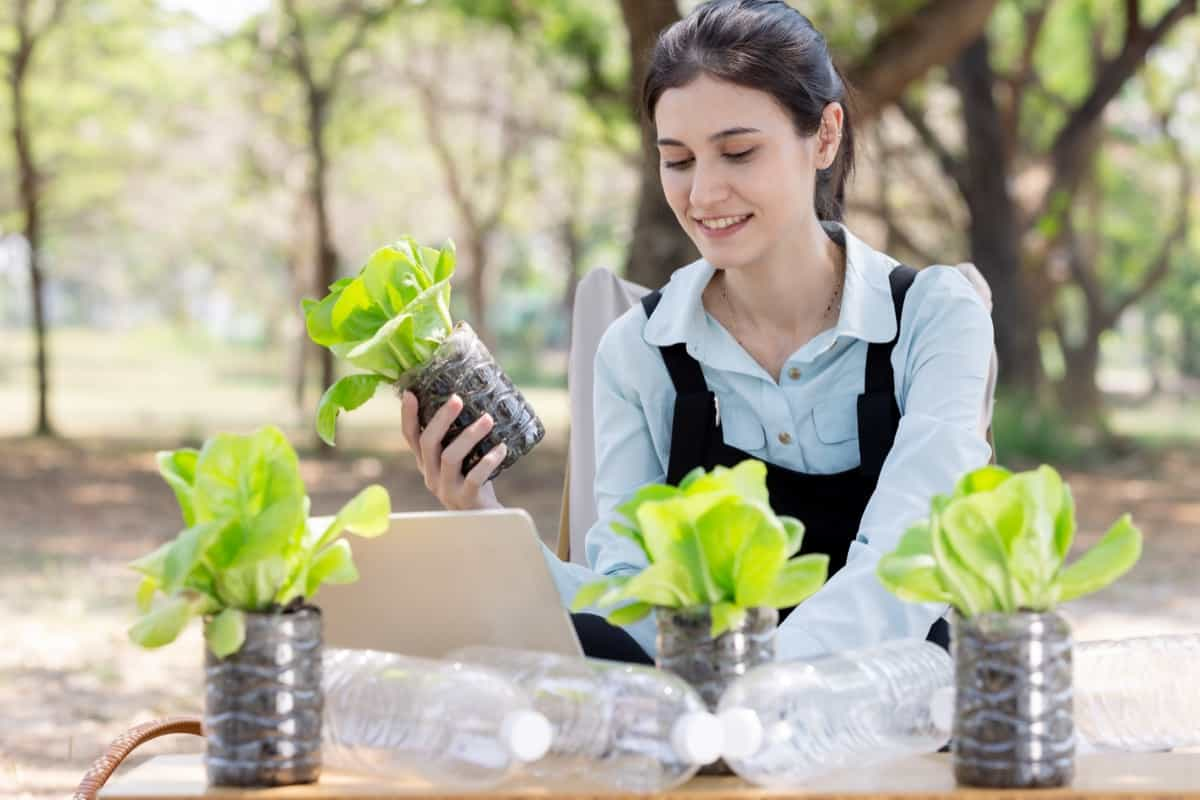
Screws or nails can also be used to attach the bottles to a wall. A self-watering system can be created by cutting off the top and bottom of two plastic bottles, inserting the inverted top half into the bottom half, filling the inverted top half with soil, and planting the seeds or seedlings. The water will wick through the soil, keeping the plants hydrated.
Overcoming Challenges and Common Issues in Cultivating Plants in Recycled Plastic Bottles and Containers
Choosing the right plastic bottle or container: Some containers may contain harmful chemicals, be too thin or brittle, or be too small or large to limit plant growth or drainage. To avoid these issues, choose containers made of food-grade materials like PET, sturdy and durable like HDPE, have enough space for roots and water, and have a shape and color that suits your plants’ needs.
Providing enough light and air: Plants need light and air to grow and thrive, but plastic bottles and containers can block or reduce this. To address this, place planters in a sunny spot with at least six hours of direct sunlight per day and ensure adequate ventilation and air circulation around them.
Preventing pests and diseases: Plants grown in plastic bottles or containers are more prone to pests and diseases than those grown in pots or the ground. To prevent this, keep planters clean and dry, avoid overwatering or underwatering, inspect plants regularly for signs of pests or diseases, and remove infected or damaged parts. Natural remedies like neem oil, garlic spray, or vinegar can also help repel or kill pests and diseases.
In case you missed it: How to Grow Flowers at Home: From Seeds, Without Seeds, for Indoors/Outdoors, and Containers
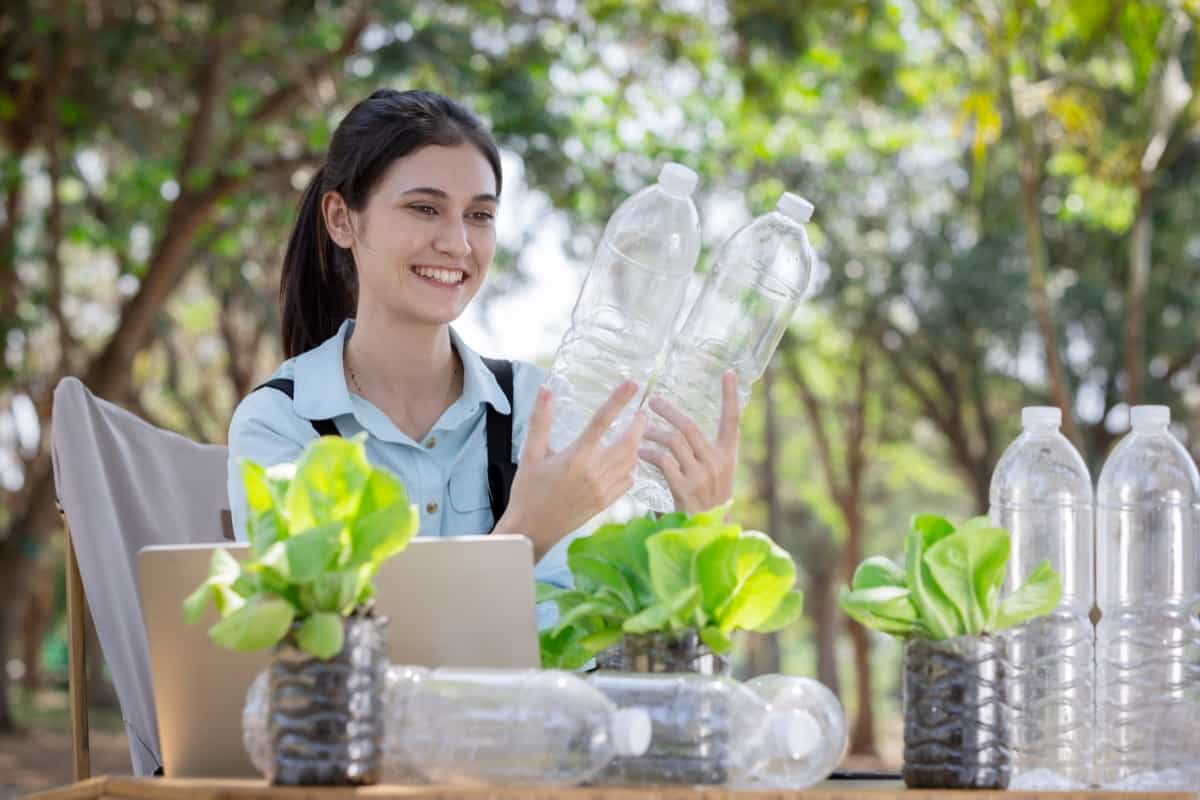
Conclusion
Plastic bottles and containers are a creative and eco-friendly way to grow plants in small spaces. They can be used for various purposes like water sprinklers, planters, hanging herb gardens, vertical gardens, and self-watering systems. However, there are challenges, such as choosing the right container, providing enough light and air, and preventing pests and diseases. By following tips, you can enjoy growing healthy and beautiful plants in recycled plastic bottles and containers, reducing waste, and promoting sustainability.
- Types of Pesticides Used in Agriculture: A Beginner’s Guide
- Economical Aquaculture: A Guide to Low-Budget Fish Farming
- 15 Common Planting Errors That Can Doom Your Fruit Trees
- How to Make Houseplants Bushy: Effective Tips and Ideas
- Innovative Strategies for Boosting Coconut Pollination and Yield
- Pollination Strategies for Maximum Pumpkin Yield
- The Complete Guide to Chicken Fattening: Strategies for Maximum Growth
- Natural Solutions for Tulip Problems: 100% Effective Remedies for Leaf and Bulb-Related Issues
- Revolutionizing Citrus Preservation: Towards a Healthier, Greener Future
- Natural Solutions for Peony Leaf and Flower Problems: 100% Effective Remedies
- Maximizing Profits with Avocado Contract Farming in India: A Comprehensive Guide
- Natural Solutions for Hydrangea Problems: 100% Effective Remedies for Leaf and Flowers
- The Ultimate Guide to Choosing the Perfect Foliage Friend: Bringing Life Indoors
- From Sunlight to Sustainability: 15 Ways to Use Solar Technology in Agriculture
- The Ultimate Guide to Dong Tao Chicken: Exploring from History to Raising
- The Eco-Friendly Makeover: How to Convert Your Unused Swimming Pool into a Fish Pond
- Mastering the Art of Delaware Chicken Farming: Essentials for Healthy Backyard Flocks
- 20 Best Homemade Fertilizers for Money Plant: DIY Recipes and Application Methods
- How to Craft a Comprehensive Free-Range Chicken Farming Business Plan
- Brighten Your Flock: Raising Easter Egger Chickens for Beauty and Bounty
- How to Optimize Your Poultry Egg Farm Business Plan with These Strategies
- Subsidy for Spirulina Cultivation: How Indian Government Schemes Encouraging Spirulina Farmers
- Ultimate Guide to Raising Dominique Chickens: Breeding, Feeding, Egg-Production, and Care
- Mastering the Art of Raising Jersey Giant Chickens: Care, Feeding, and More
- Ultimate Guide to Raising Legbar Chickens: Breeding, Farming Practices, Diet, Egg-Production
- How to Raise Welsummer Chickens: A Comprehensive Guide for Beginners
- How to Protect Indoor Plants in Winter: A Comprehensive Guide
- Ultimate Guide to Grow Bag Gardening: Tips, Tricks, and Planting Ideas for Urban Gardeners
- Guide to Lotus Cultivation: How to Propagate, Plant, Grow, Care, Cost, and Profit
- Agriculture Drone Subsidy Scheme: Government Kisan Subsidy, License, and How to Apply Online
- Ultimate Guide to Raising Araucana Chickens: Breed Profile, Farming Economics, Diet, and Care
- Bringing Hydroponics to Classroom: Importance, Benefits of Learning for School Students
- Ultimate Guide to Raising Polish Chickens: Breed Profile, Farming Economics, Diet, and Care
- Ultimate Guide to Raising Australorp Chickens: Profile, Farming Economics, Egg Production, Diet, and Care
- Silkie Chicken Farming: Raising Practices, Varieties, Egg Production, Diet, and Care
- Sussex Chicken Farming: Raising Practices, Varieties, Egg Production, Diet and Care